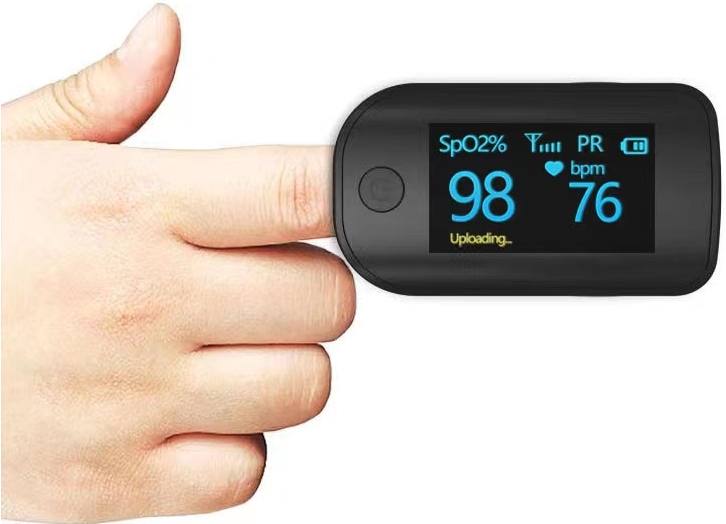- HOME
- INTRODUCTION Profile Milestone Team
- SERVICE Warranty RMA Policy Technical Support
- PRODUCTS Surgical Energy Platform Electrosurgical Unit Patient Monitor Medical Pump Electrocardiograph Handheld Pulse Oximeter Fetal Doppler Fingertip Pulse Oximeter Operation Room Veterinary Series
- NEWS Company News Exhibition News
- VIDEO
- CONTACT
- ----------
- Promise Technology Announced Chinese First 4G Cell
- 2024-03-01 00:46:36

Promise Technology is a professional manufacturer of medical devices in China. Since the coronavirus pandemic began in 2020, Promise Technology became a qualified supplier of epidemic prevention products because of the product quality, accuracy and customer services. Pulse oximeter,one of our products, is widely used worldwide during this pandemic. Nearly 10 million pieces of oximeters were produced and exported to over 100 countries in the world to fight against the epidemic, and we get mostly positive feedback from customers and users.
With the wide spread of coronavirus, the spending of health workers and medical materials have increased tremendously in every hospitals and clinics. In order to provide accurate test result with more convenience, Promise Technology organized the R&D department to start the 4G Cellular-Connected SpO2 Pulse Oximeter project immediately. This project is mainly powered by the world’s smartest Remote Patient Monitoring (RPM) Technology. It means that your readings will be uploaded automatically and synchronously through the cellular network when you use our oximeter, reducing the overload operation of medical institutions and support home-test data analysis by professionals.
The key to the project is the close and trusting relationship with the patients, and the seamless connection with the health system, which is of great importance for different chronic disease. It provides a more efficient chronic disease management system for those patients around the world. It is convenient for them to get good medical services and health guidance from community hospitals. At the same time, it also provides a more convenient solution to the global aging problem.
At present, we are one of the professional suppliers that truly complete data transmission by 4G network. From the selection of the 4G LTE Module to the research and development,we finally passed all the tests and complete data transfer, which can be done once the network is connected. It takes us two years to achieve great success. Now more and more hospitals and clinics accept this as a daily measures for chronic disease patient as it is widely applicable for following chronic disease:
1. Cystic Fibrosis
Pulse oximeter is commonly used for patients with cystic fibrosis as it allows physicians to monitor for signs of hyperoxia, or lack of sufficient blood oxygen supply.
2. COVID-19
Low blood oxygen levels are a key symptom of COVID-19 and can serve as an early detection mechanism. Pulse oximeter helps providers monitor patients’ ongoing blood oxygen levels and streams it directly into the Provider Portal where clinicians can access COVID-19 symptom data. When the patient’s reading is below the normal range, indicating hypoxemia, the provider will be alerted immediately, enabling earlier intervention and treatment.
3. Asthma
Asthma affects a patient's ability to breathe and therefore, the amount of oxygen reaching the rest of their body. Using a pulse oximeter regularly can help providers measure blood oxygen levels, assess asthma severity, and make more informed treatment decisions.
4. Pneumonia
Pulse oximetry can help detect low oxygen levels for patients with pneumonia before symptoms worsen, enabling physicians to adjust the patient’s care plan and mitigate any potential issues.
5. Chronic Obstructive Pulmonary Disease (COPD)
Pulse oximeter can be helpful for remotely monitoring patients with COPD. Using a pulse oximeter to monitor patients blood oxygen levels can help providers monitor COPD severity and treat it accordingly.
6. Emphysema, Bronchitis, and Bronchiectasis
The use of pulse oximeter may be beneficial for patients suffering from any of these conditions as it can help determine and ensure safe oxygenation levels.
7. Acute Heart Failure
A pulse oximeter can help providers establish baseline oxygen saturation and monitor changes in blood oxygen levels for patients suffering from acute heart failure. It is also effective for measuring the patient’s response to treatment, as it allows practitioners to quickly intervene or make changes to the patient’s care plan, lowering the risk for complications or higher escalations of care.
The 4G cellular-connected pulse oximeter allows health care providers to monitor and collect patient’s physical readings as it can measure oxygen saturation and send real-time, reliable data to the portal automatically and synchronously. When the readings become abnormal,indicating hypoxemia, it will alert the providers to act immediately, enabling earlier intervention and treatment.
So how does it work?
With built-in cellular transmission capability, the PROMISE remote pulse oximeter is shipped directly to your patients and pre-configured so that it works out-of-the-box immediately. This means there is no App pairing,WIFI or setup required.
When the patient receives a PROMISE 4G cellular-connected pulse oximeter, please open the box and take it out, insert the battery then clip on the finger, switch it on as regular pulse oximeter. Once the data has been displayed on the screen,the cellular data transfer will begin automatically. “Uploading” will appear on the screen. (as shown in Figure 1).

Figure 1
At the same time, the SpO2 reading and the Pulse Rate will be uploaded to the portal with the device serial number. Once the data has been transferred, the screen will display a message “Success”, (as shown in Figure 2), and then the device will automatically be powered off after data transmission completed.


Figure 2
By sending data to the provider portal, our cellular-connected SpO2 pulse oximeter will alert providers of a problem and give them time to act accordingly. Our pulse oximeter is also advantageous for its ease of use and low power consumption. This revolutionary technology will allow patients to remain at their hospital-in-home to recover in a familiar place in stead of a traditional hospital ward.

